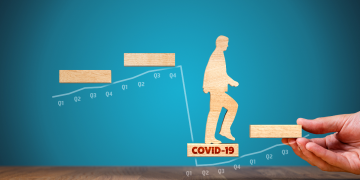Mindfulness has proven to be a powerful tool for leaders. Chief executives at small and large corporations alike have embraced mindful practices for themselves as well as implementing company-wide initiatives, such as meditation and yoga to guide employees in becoming more mindful. The programs have resulted in happier workplaces, but have also increased profitability and sustainability.
What is mindful leadership? Mindful leadership integrates the practice of being present in the moment with the practical tools of management. As a leader, to effectively set the stage and provide direction for the organization, mindfulness is now critical to your individual and your organization’s success.
Tangible Benefits Experienced by Professionals With a Mindfulness Practice
- Stress reduction.
- Ability to think before reacting.
- More clarity and focus.
- Increased access to creativity and innovation.
- More patience and gratitude.
- Better self-awareness.
- Increased problem solving ability.
- Increased neuroplasticity in our brains to assist in the changing of long-held patterns/habits of thinking/behaving that don’t work for us anymore.
Mindfulness and meditation are often used interchangeably, particularly when it comes to mindful leadership, but meditation is a mindfulness tool and is just one way to strike a balance between emotion and logic. Some might say, another way to increase your emotional intelligence agility.
Imagine your brain as a continuum with emotion on one end and logic on the other, the goal being to center yourself between the two. The mindfulness practice will help you become centered. The practice enables you to strike a balance between emotion and logic so you can increase your effectiveness in your role.
No matter where you are on the continuum of logic and emotion, you can begin to practice mindfulness and experience the rewards of mindful leadership. The key is starting and then integrating a consistent practice into your daily routine.
Suggested Daily Meditation Practice
- Upon waking – sit comfortably on the floor or in a chair.
- Sit upright, spine straight.
- Soften your gaze.
- Find your breath.
- Close your mouth and breathe through your nose.
- Notice your breath flowing in and out over your top lip.
- Put your attention on that spot above your upper lip – notice, feel, observe your breath moving in and out.
- If your mind wanders and you begin thinking about something else – notice that you are thinking and invite yourself back to your breath. Do this as many times as needed. Gradually, you might notice your mind wanderings lessen.
Start by doing this practice for 10 minutes a day. Gradually increase the time in small increments to 30 minutes.
The key is to do this practice every day at the same time, sit in the same spot and recognize that this is a discipline like an exercise routine. There are times when you might need to force yourself to sit for 10 minutes. It doesn’t matter how you come to your sitting, it just matters that you do it. Typically, it takes at least six weeks of daily, consistent practice to reap real and lasting rewards. Yet, many claim positive results after only a week of regular practice. Additional examples of mindfulness tools and practices include:
1. Stay Awake.
Most of us have experienced emotions so strong that it seemed as if our body was being possessed by outside forces. Acknowledging the connection between your mind and body can help. Intentional breathing is effective, as is just simply paying attention to where your body sensations are located and then studying that sensation for a few minutes, noting the intensity, color, shape, weight, etc. Even something as simple as wiggling your toes can connect your mind to your body.
2. Mindful Eating.
Equally as important as the food we eat is the way in which we nourish ourselves. Rather than wolfing down lunch at your desk, give yourself a break and take even five to 10 minutes to just eat. Set your fork down between bites. Chew your food before you swallow. Pay attention to how your food feels in your mouth and what your body is physically doing to enable you to “eat.” Eating in this manner, gives your mind something tangible to focus on and thereby giving it a break. You will likely be more productive than eating at your desk.
3. Daily Gratitude.
At the start or end of your day, spend a few minutes thinking, or even writing, about what you are grateful for in the moment. Name three things off the top of your head – coffee, bagel, shower. You don’t need to delve deep (unless you want to), but work on switching it up every day.
4. Be in Nature.
Nature can be magical if you pay attention. Find a place where you can escape to and take in all the beauty that surrounds you. Even a 15-minute sit on a park bench or a walk down the block can bring you the appreciation of being free of whatever you are typically tethered to.
The end goal of mindfulness is to have you be present to the moment you are in, to be aware of your thoughts and feelings as they happen and to accept them without judgment. Doing so better equips you to be intentional about your actions and reactions.







